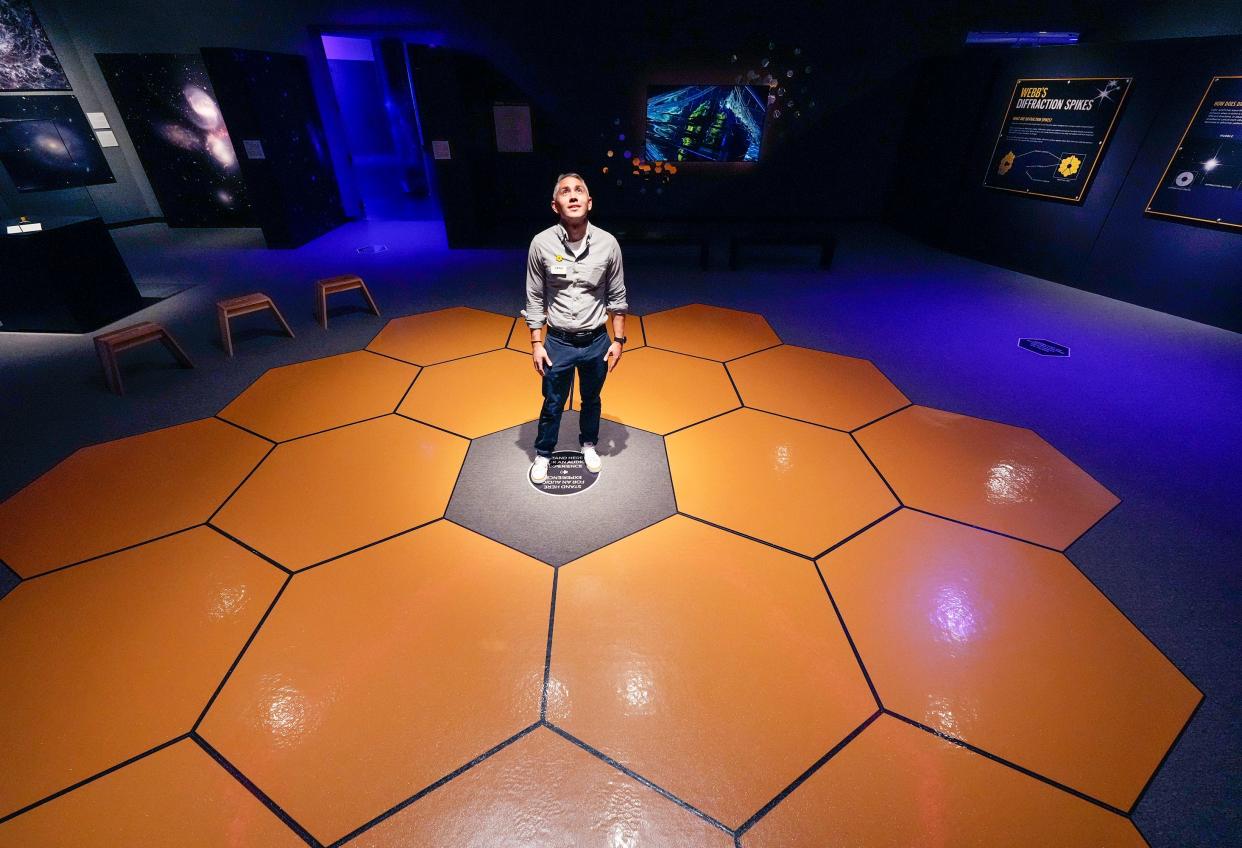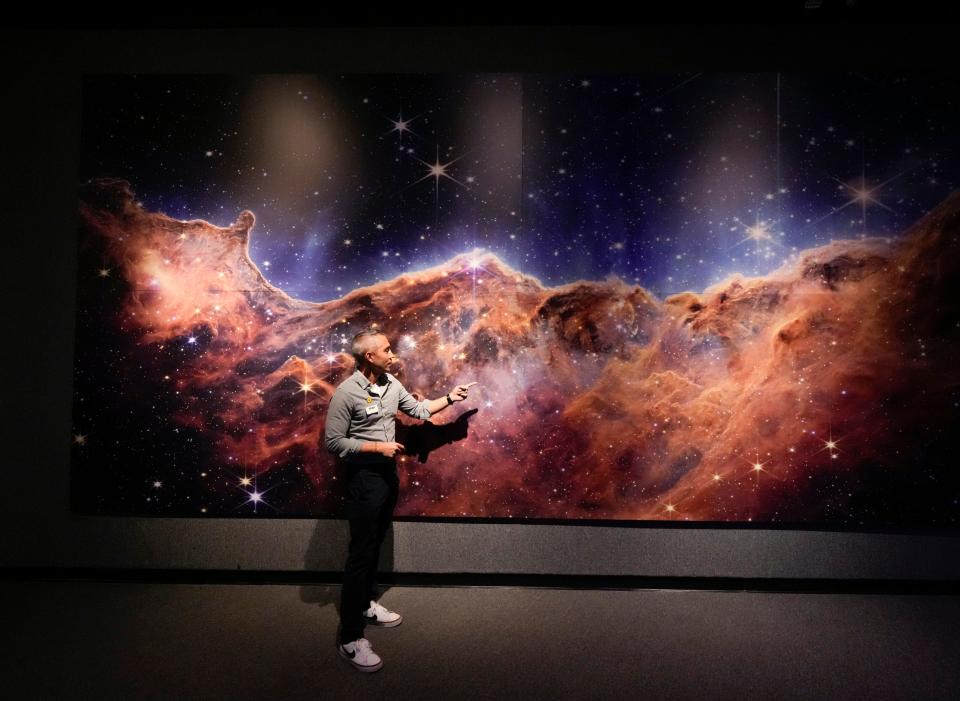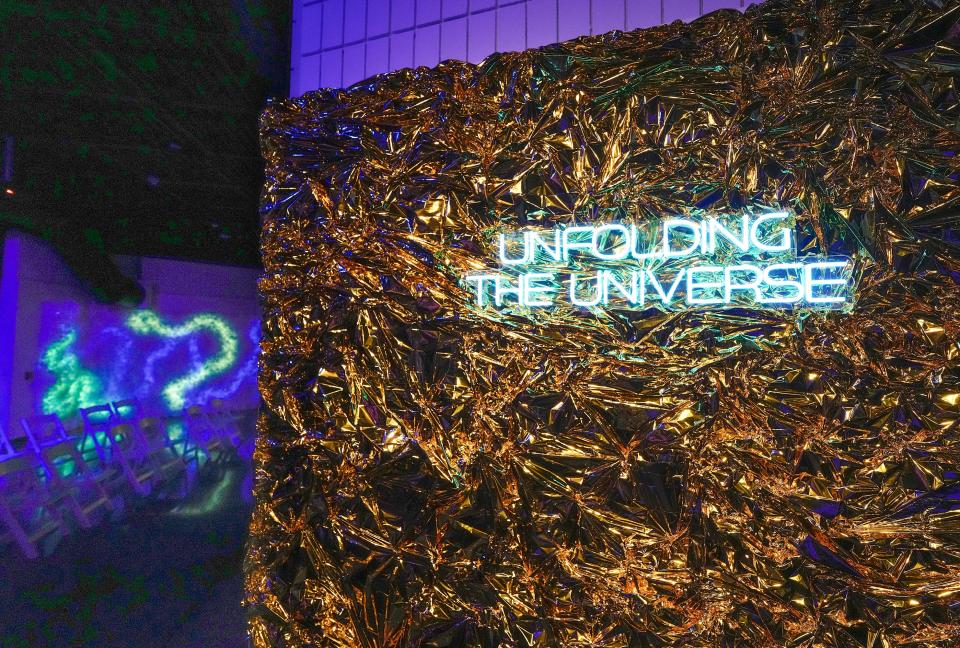James Webb Space Telescope exhibit in Daytona Beach shares new scenes from the universe

The Museum of Arts and Sciences in Daytona Beach has unveiled an exhibit of universal proportions.
The "Unfolding the Universe: The James Webb Space Telescope" display, which opened to the public on May 20 and will continue through Oct. 1, uses extra-large images from the space observatory combined with interactive features and ambient music.
"We want people to feel like they're walking around in space a little bit," the museum's curator of science Seth Mayo said.
Orlando residents Heidi and Bob Wilkins looked intently at several images and took a break to reflect.
"How could we possibly be alone?" Heidi Wilkins said.
"It's hard to just wrap your head around the size of the universe," Bob Wilkins said.
Astronaut candidates: A Deltona High grad who grew up in DeBary makes list
James Webb Space Telescope looks deeper into the universe

NASA’s James Webb Space Telescope launched into space on Dec. 25, 2021. The release of the first batch of full-color images from the telescope in July 2022 sparked tremendous interest as people shared their collective awe.
The telescope is designed to look back across the history of the universe "into the epoch when the very first stars and galaxies formed, over 13.5 billion years ago," according to NASA.
"Ultraviolet and visible light emitted by the very first luminous objects has been stretched or 'redshifted' by the universe’s continual expansion and arrives today as infrared light. Webb is designed to 'see' this infrared light with unprecedented resolution and sensitivity," according to NASA.
The result is new images and some familiar scenes with more details than the NASA Hubble Space Telescope provided, Mayo said. Many more images are yet to come. NASA officials believe that the observatory could operate for over 20 years if all goes well.
One image of the Carina Nebula, described in the exhibit as "an active star-forming region about 7,600 light-years away," is blown up to stretch across most of a wall in the Daytona Beach gallery. Another image shows The Pillars of Creation, gas and dust pillars that "are constantly morphing and flowing, serving as a star nursery."
Staying curious

The exhibit describes how the telescope works and its story from construction to launch after visitors step through the entrance, which is part of a neon-blue hexagon. The telescope's primary mirror is a collection of hexagons made of beryllium with a gold coating. The gold helps with infrared light reflection, according to NASA.
The floor of the exhibit has random tidbits in hexagons, like this fact: "To reach Webb's orbit, you would have to drive from Daytona to Orlando over 16,000 times."
In the main room, people can stand in the middle of a floor design of the telescope's primary mirror, take selfies in front of a neon and gold display or see what they look like in infrared light. There's also a spot for people to write glow-in-the-dark "cosmic questions" or "space doodles."
Mayo said the purpose behind the exhibit in part is to spark curiosity.
"That's what this is all about is remaining curious and (thinking) about what's out there in the universe, you know, and how it can help us ... better understand ourselves in a lot of ways," he said.
It's a self-guided exhibit, but Mayo and others host special tours from time to time. He is scheduled to host a tour from 3-4 p.m. on June 8. Other special events are scheduled, too.
People can see the exhibit as part of their regular museum admission, which is $12.95 for adults, $6.95 for children, and $10.95 for seniors and students. For information, go to moas.org or call (386) 255-0285.
This article originally appeared on The Daytona Beach News-Journal: Daytona Beach exhibit features James Webb Space Telescope images

